Ah, the joy of welcoming a new puppy into your home! It’s a time filled with endless cuddles, wagging tails, and the promise of countless adventures. As you embark on this exciting journey, one thing that often crosses the minds of new puppy parents is how to keep their little bundle of energy entertained and stimulated. That’s where the right toys come into play. Toys not only provide mental and physical exercise but also help in shaping your puppy’s behavior and development. In this article, we’ll delve into the world of puppy toys, offering insights and tips to ensure your furry friend grows up with the perfect playmates.
Welcome to the World of New Puppies: A Toy Adventure!
Ah, welcome to the delightful chaos of new puppies! These adorable balls of fluff bring so much joy and excitement into our lives. As a new puppy owner, you’re about to embark on a thrilling adventure filled with wagging tails, puppy breath, and, of course, a plethora of toys. Let’s dive into the exciting world of new puppy toys and discover the wonders they bring to both you and your furry friend.
Puppies are like little sponges, eager to learn and explore their new environment. During this crucial time, introducing the right toys can be a game-changer for your pup’s development. Not only do toys keep them entertained, but they also help in shaping their behavior, stimulating their minds, and providing a healthy outlet for their natural instincts.
Imagine this: a squeaky toy that sends your puppy’s ears perking up with delight. The sound alone can be enough to spark a burst of energy and curiosity. It’s in these moments that you’ll see your puppy’s personality start to shine through. They might be the playful hunter, the gentle tug-of-war partner, or the enthusiastic chewer. Toys are the perfect tools to bring out the best in your new furry companion.
Now, let’s talk about the top 5 must-have toys for your new puppy’s first few months. These toys are not only fun but also designed to help your puppy grow and learn:
-
Teething Toys: New puppies go through a teething phase, and having a chew toy specifically designed for this purpose can be a lifesaver. These toys are usually made of durable materials that can withstand hours of gnawing and help soothe those sore gums.
-
Interactive Treat Dispensers: These clever toys challenge your puppy to figure out how to get treats out, keeping their minds engaged and providing a mental workout. Plus, it’s a great way to encourage them to use their problem-solving skills.
-
Soft, Plush Toys: These comforting companions can become your puppy’s favorite. Plush toys offer a sense of security, and many come with fun features like crinkly textures or jingly parts to keep your pup interested.
-
Fetch Toys: Engaging in fetch is a classic game that promotes physical exercise and bonding. Look for toys that are easy to throw and retrieve, and that won’t easily become damaged by the excitement of the game.
-
Tug Toys: Puppies naturally have a tendency to bite and tug, and these toys are designed to be strong enough to withstand the pull. They can be made of rope, fabric, or even rubber, and they’re perfect for those spirited tug-of-war matches.
Interactive toys are a fantastic way to deepen the bond between you and your puppy. These toys often come with puzzle elements that require your puppy to use their nose and brain to find the treats or hidden toys. Not only does this stimulate their mind, but it also gives them a sense of accomplishment.
Safety is paramount when it comes to choosing toys for your new puppy. Look for toys made from non-toxic materials, free of small parts that could be easily swallowed, and durable enough to withstand puppy power. It’s also essential to supervise playtime, especially with young pups, to ensure that the toys don’t get torn apart or ingested.
But toys aren’t just for playtime; they can also be a great way to keep your puppy busy when you’re not around. By placing a puzzle toy with treats inside, you can create a distraction for your pup, reducing the likelihood of destructive behavior when you’re at work or running errands.
Scented toys can also be a delightful addition to your puppy’s toy collection. Many puppies have a keen sense of smell, and a toy with a familiar scent can be very comforting, especially during the initial stages of adjustment to a new home.
Remember, the key to maintaining your puppy’s toys is to regularly check for wear and tear. Puppies are hearty chewers, and even the sturdiest toys can eventually show signs of damage. Replace toys as needed to ensure your puppy’s safety and to keep them engaged.
In the end, the perfect toy for your new puppy is one that promotes growth, learning, and joy. It’s a tool that can help shape your puppy’s development and provide countless hours of entertainment. So, go ahead and explore the world of new puppy toys. It’s an adventure that’s sure to be filled with wagging tails, barking laughter, and endless fun for both you and your new furry family member.
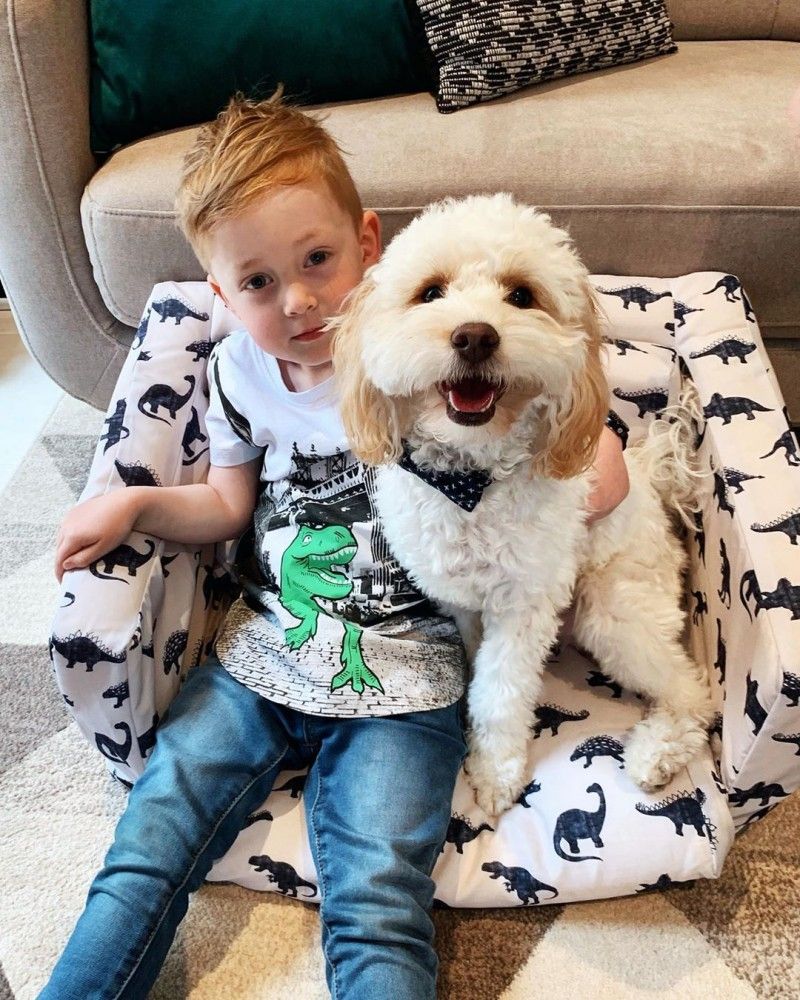
Why New Toys are Essential for Your New Puppy’s Development
New puppies are a bundle of joy, but they also come with a world of learning and growth. One of the most important aspects of their development is the introduction of toys. These aren’t just playthings; they’re key tools that shape your puppy’s physical, mental, and emotional well-being. Here’s why new toys are essential for your new puppy’s development:
Teething and Chewing NeedsPuppies naturally go through a teething phase, where their milk teeth start to fall out and adult teeth begin to emerge. This process can be uncomfortable and even painful for them. New toys, especially those designed for teething, can provide relief by offering a safe and appropriate outlet for their natural urge to chew. This helps prevent destructive behaviors like gnawing on furniture or shoes.
Mental StimulationPuppies have curious minds that are constantly seeking new experiences. Toys that encourage problem-solving and interaction can keep their minds engaged and sharp. Interactive toys, puzzle feeders, and treat-dispensing toys challenge your puppy’s cognitive abilities, helping to prevent boredom and destructive behavior that can arise from lack of mental stimulation.
SocializationToys can also be a great way to help your puppy socialize. By introducing new toys, you can create opportunities for your puppy to interact with other dogs, which is crucial for their social development. Shared toys can help teach your puppy how to communicate and play with others, building essential life skills.
Physical ExercisePhysical activity is vital for a puppy’s growth and development. New toys can inspire your puppy to move more, whether it’s through fetching, tug-of-war, or simply exploring their surroundings. Regular exercise helps maintain a healthy weight, strengthens bones and muscles, and can even reduce the risk of certain health issues later in life.
Emotional Well-beingToys can be a source of comfort and emotional security for puppies. A familiar toy can be a soothing presence during times of stress, such as when they’re in a new environment or feeling anxious. This can help establish a sense of routine and reduce separation anxiety.
Learning BoundariesThrough play, puppies learn about boundaries and acceptable behavior. By interacting with toys, they can learn what is appropriate to chew and what is not. This can translate into better behavior around your home and other people’s belongings.
Health and HygieneToys can also help with a puppy’s hygiene. Some toys are specifically designed to mimic the sensation of grooming, such as toothbrushes for dogs. Regular playtime with these toys can help keep your puppy’s teeth clean and healthy.
Encouraging IndependenceAs your puppy grows, teaching them to play independently is important. Introducing new toys that they can engage with on their own can help them learn to occupy themselves without constant supervision. This is especially useful when you’re unable to be with them, such as when you’re at work or on vacation.
Strengthening the BondLastly, new toys can be a way to strengthen the bond between you and your puppy. Engaging in play and choosing toys together can create special moments and shared experiences that deepen your connection.
In summary, new toys are not just fun for your puppy; they are integral to their overall development. From physical health to emotional growth, the right toys can make a significant difference in the life of a new puppy. As you select new toys for your furry friend, consider their needs, interests, and the type of play that will best support their development journey.
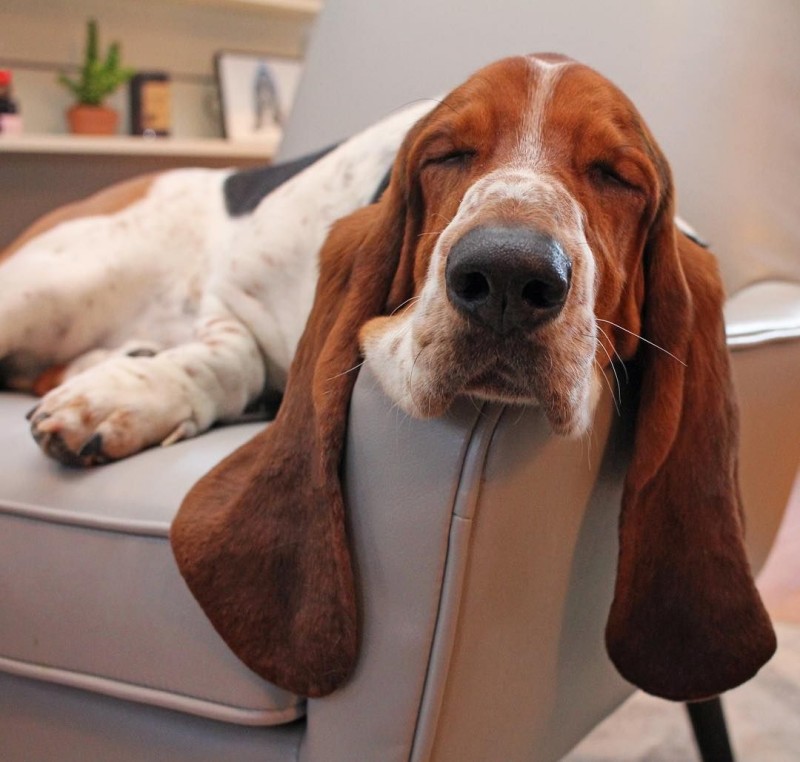
Top 5 Must-Have Toys for Your New Puppy’s First Months
-
When you bring home a new puppy, their world is full of excitement and endless curiosity. To help them navigate this new environment and develop crucial skills, having the right toys is as important as providing love and care.
-
The teether is a must-have for new puppies. These chew toys are designed to soothe sore gums during teething, which usually starts around 3-4 weeks old. Look for toys made from natural materials like rubber or silicone that are safe for your puppy to chew on.
-
Puzzle toys are excellent for stimulating your puppy’s mind. These toys challenge them to figure out how to get treats or toys out, which is not only fun but also mentally engaging. They can help prevent boredom and destructive behavior by keeping your puppy’s brain active.
-
Squeaky toys are irresistible to many puppies and can provide hours of entertainment. They’re great for play sessions and also serve as a source of comfort. Make sure the toy is durable enough to withstand rigorous chewing, as puppies are notorious for their strong jaws.
-
Tug toys are essential for socialization and exercise. They encourage your puppy to engage in physical activity, which is crucial for their health and development. The act of tugging also helps to develop their jaw muscles and reinforce good behaviors during playtime.
-
Kongs are versatile and can be used for both mental and physical stimulation. They come in various sizes and can be stuffed with treats or kibble to keep your puppy occupied for extended periods. This type of toy is perfect for rainy days or when you need a moment of peace.
-
Soft, plush toys can be a comforting presence for your puppy, especially during naptime or when they’re feeling a bit overwhelmed by their new surroundings. Look for ones with durable stitching and a sturdy filling to withstand hours of cuddling and gentle play.
-
Ball toys are ideal for games of fetch, which are great for your puppy’s physical development. Retrieving a ball encourages your puppy to move, run, and jump, which helps build muscle and improve coordination. It’s also a fantastic way to bond with your new furry friend.
-
Interactive feeding toys can transform mealtime into a fun challenge. They’re designed to be filled with kibble, and your puppy must manipulate the toy to get the food out. This not only entertains your puppy but also ensures they’re eating at a slower pace, which can be beneficial for their digestion.
-
No puppy toy collection is complete without a chew stick. These natural wood or rope toys are perfect for chewing and can help clean your puppy’s teeth. They also provide a satisfying crunch that many puppies love.
-
Don’t forget about water toys, especially if your puppy enjoys being in the water. Floating toys can provide a new element to your play sessions and help your puppy get accustomed to water, which is especially important for breeds that will need to swim regularly.
-
As your puppy grows, so will their playtime needs. It’s important to have a range of toys to keep your puppy interested and to ensure that their development continues on track. Regularly rotate toys to keep things fresh and exciting for your new companion.
-
Always supervise your puppy during playtime, especially when introducing new toys. This will help you monitor how they interact with their new toys and ensure that they are safe to use. Puppies can sometimes ingest small pieces or be rough with toys, so it’s best to keep an eye on them.
-
Remember that every puppy is unique, and what works for one may not work for another. It’s okay to try different types of toys and observe which ones your puppy prefers. This will help you create a personalized toy collection that suits your puppy’s personality and play style.
-
Finally, while toys are a vital part of your puppy’s life, they should not replace the love, attention, and training they receive. Use toys as a supplement to help your new puppy adjust to their new home and develop into a well-rounded, well-behaved dog.
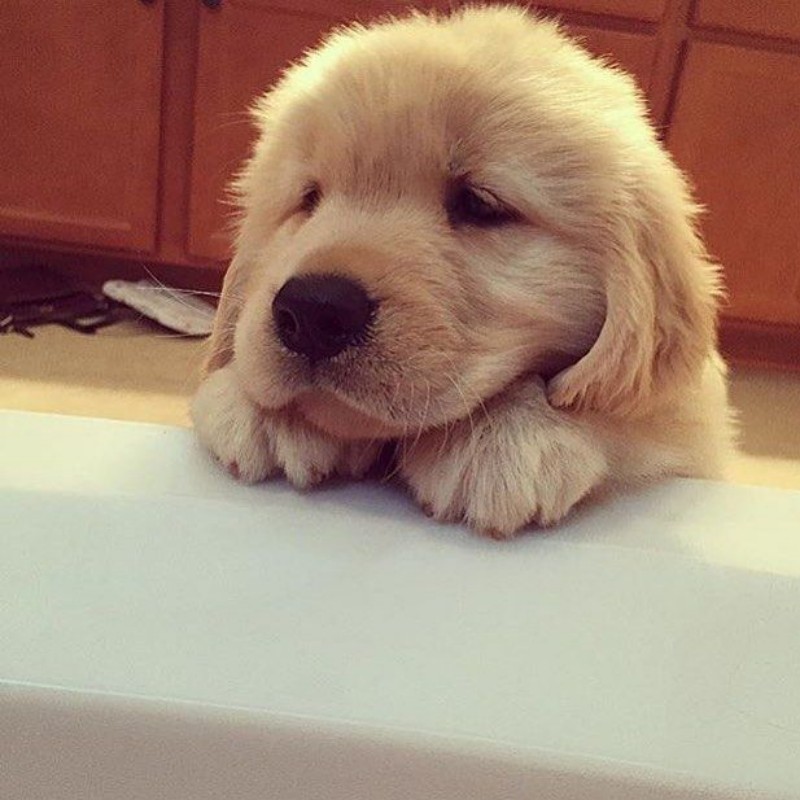
Interactive Toys: The Key to Bonding and Playtime Fun
Interactive toys aren’t just fun for your puppy; they’re a cornerstone of their development. Here’s why they’re essential and what types to consider:
1. Cognitive StimulationInteractive toys are designed to engage your puppy’s mind, providing cognitive stimulation that is crucial for their growth. Puzzles, treat-dispensing toys, and toys that require problem-solving skills help keep their brain active, preventing boredom and reducing the likelihood of destructive behavior.
2. Physical ExercisePlaytime is an excellent way to ensure your puppy gets the physical activity they need. Interactive toys that encourage movement, like tug-of-war ropes or chase toys, can help with muscle development and overall fitness, especially important for large breeds that are prone to joint issues.
3. Bonding OpportunitiesInteractive play can strengthen the bond between you and your puppy. Toys that mimic the scent of their mother or another familiar animal can help soothe them and make them feel secure. Engaging with these toys together can create positive associations and deepen your relationship.
4. SocializationInteractive toys can also aid in socialization. They can be shared with other pets or used during group play sessions, helping your puppy learn how to interact appropriately with other dogs and humans.
5. Scent and Taste ExplorationPuppies are naturally curious about their surroundings, and interactive toys often come with a variety of scents and textures. This allows them to explore and learn about the world around them through their senses, which is a vital part of their development.
Types of Interactive Toys to Consider:
1. Treat-Dispensing ToysThese toys keep your puppy occupied as they work to get treats out, teaching them patience and problem-solving skills. Options range from simple rubber balls that require your puppy to push treats out of holes to more complex puzzles that require assembly.
2. Puzzle ToysPuzzle toys challenge your puppy’s mind by requiring them to figure out how to retrieve treats or toys from a puzzle. This can be as simple as a ball with hidden compartments or as intricate as a multi-level maze.
3. Tug-of-War ToysTug-of-war is a classic way to provide physical exercise and mental stimulation. Look for durable ropes or plush toys that can withstand the strength of a growing puppy.
4. Scented ToysToys that come with a familiar scent, such as a toy that resembles a sock with the smell of your puppy’s mother or a toy infused with calming essential oils, can be particularly comforting and bonding.
5. Fetch ToysFetch toys are great for physical activity and can be a great way to tire out your puppy. Choose toys that are easy to throw and catch, like a lightweight ball or a frisbee.
How to Integrate Interactive Toys into Your Puppy’s Routine:
- Start with simple toys and gradually introduce more complex ones as your puppy’s skills and interests develop.
- Use interactive toys as a reward during training sessions to reinforce good behavior.
- Always supervise playtime, especially with toys that have small parts or are easily torn apart.
- Rotate toys regularly to keep things interesting and prevent your puppy from getting bored with the same items.
Interactive toys are more than just a source of entertainment; they are a tool for your puppy’s development. By incorporating these toys into your puppy’s daily life, you can foster a well-rounded, happy, and healthy companion.
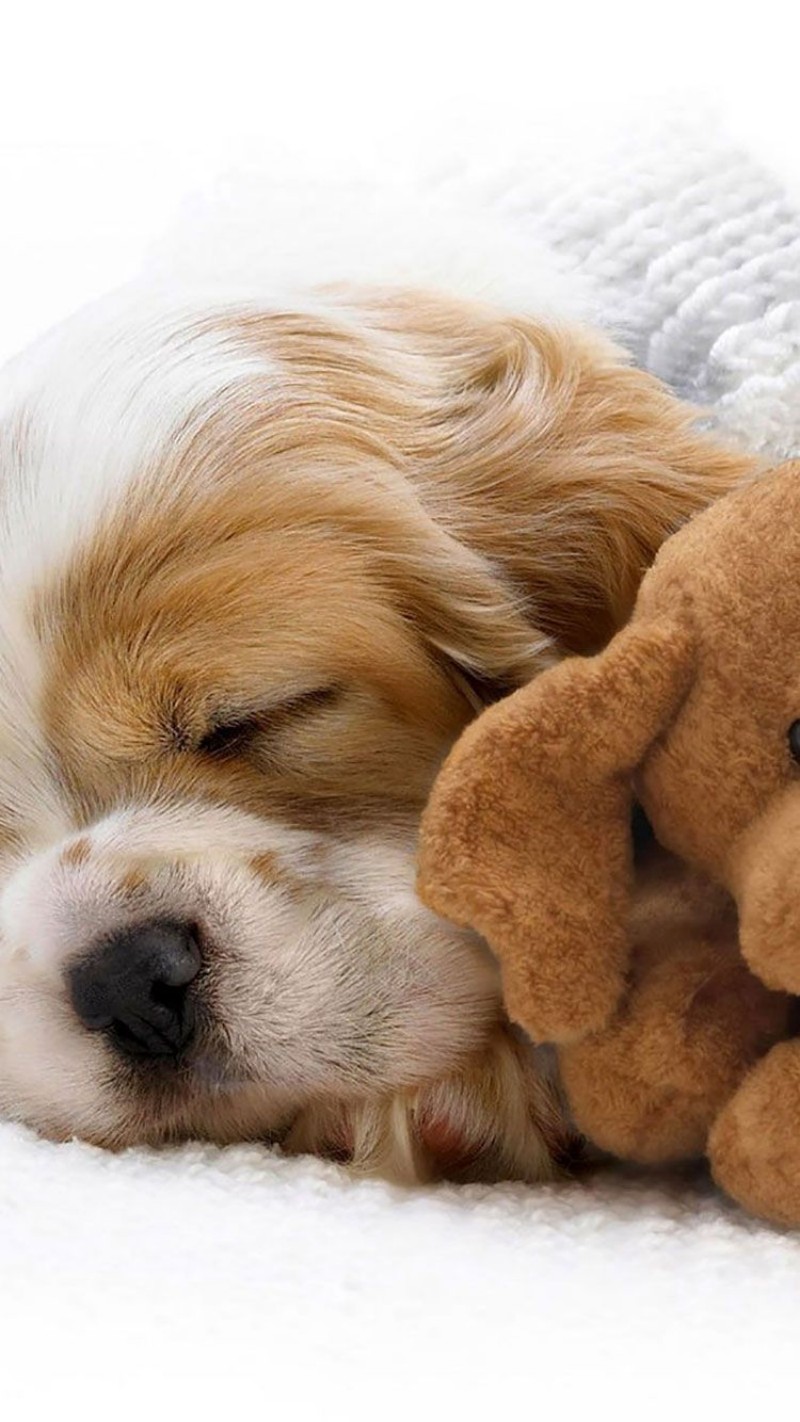
Safety First: Choosing the Right Toys for Your Puppy
Understanding the importance of safety in puppy playtime is crucial, and selecting the right toys can make all the difference. Here’s what to keep in mind when choosing toys that are not only fun but also safe for your new furry friend:
Toys Made from Non-Toxic MaterialsThe foundation of safety starts with the materials used to make the toy. Look for toys crafted from non-toxic, durable materials like natural rubber, sturdy plastic, or high-quality fabrics. These materials are less likely to cause harm if they are chewed or ingested by your puppy.
Chew Toys for Relieving Teething DiscomfortPuppies go through teething stages where their gums are sore and sensitive. Offering them chew toys can help soothe their gums and prevent them from chewing on your furniture or other household items. Opt for toys that are specifically designed for teething, with textures that massage the gums and are sturdy enough to withstand rigorous chewing.
Sturdy Rope Toys for Tug-of-WarRope toys are a classic choice for puppies, offering a great way to engage in a playful game of tug-of-war. However, it’s essential to ensure that the rope is thick enough to withstand pulling and doesn’t have any loose strings that could pose a choking hazard. Look for rope toys with strong, durable knots and secure ends.
Interactive Treat Dispensers for Mental StimulationInteractive toys that dispense treats can be a fantastic way to keep your puppy’s mind engaged. These toys challenge your pup to work for their food, which is not only entertaining but also mentally stimulating. When choosing these toys, ensure they are easy to clean and durable enough to withstand the occasional shake or toss.
Durable Balls for Fetch GamesBalls are a staple in any puppy’s toy box. They are great for exercise and mental stimulation, as well as for playing fetch. When selecting a ball, go for one that is made of a material that won’t easily puncture or crack. For larger breeds or more aggressive chewers, consider a heavy-duty ball designed to withstand heavy play.
Avoid Toys with Small PartsPuppies naturally explore their world with their mouths, so it’s important to avoid toys with small parts that can easily be swallowed. Look for toys that are whole or have large pieces that are too big to fit in a puppy’s mouth. If a toy has any parts that could come off, it’s best to keep it away from your puppy.
Check for Sharp Edges or CornersBefore giving a toy to your puppy, inspect it for any sharp edges or corners. Toys with sharp points can cause injury if they are chewed or if your puppy’s teeth catch on them. Smooth, rounded edges are safer and less likely to cause harm.
Monitor Your Puppy During PlayEven with the right toys, it’s crucial to supervise your puppy during playtime. This allows you to quickly intervene if a toy starts to break down or if your puppy starts to chew on something they shouldn’t.
Regularly Inspect and Replace ToysRegularly check your puppy’s toys for signs of wear and tear. If you notice any frayed edges, loose parts, or damage, it’s time to replace the toy to prevent any potential hazards. Toys that are no longer in good condition can pose a risk to your puppy’s safety.
Educate Your Puppy on Safe PlayTeach your puppy from an early age which toys are appropriate for them to play with. This includes showing them how to play with each type of toy correctly and reinforcing good behavior. By setting these boundaries, you help ensure that your puppy stays safe while enjoying their playtime.
Remember, Safety is a Continuous ProcessPuppy safety is not a one-time check-off list. It’s an ongoing process that requires regular attention. Keep up with your puppy’s growth and development, as their play preferences and physical abilities will change over time. Stay informed about the best practices for puppy safety and be prepared to adapt as needed.
By carefully selecting toys that are safe, durable, and appropriate for your puppy’s age and breed, you can provide them with a fun and enriching play experience that promotes their overall well-being. Always keep an eye on your puppy during play and be proactive in maintaining the safety of their toys.
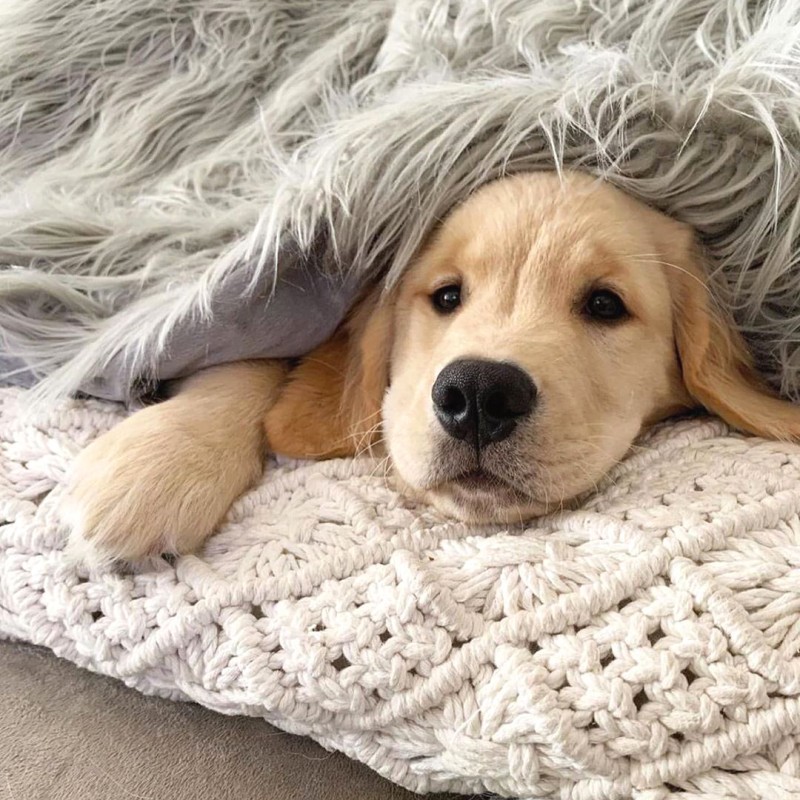
From Chewing to Fetching: How Toys Can Keep Your Puppy Busy
In the world of puppies, their boundless energy and curiosity can lead to a whirlwind of activity. Toys aren’t just for entertainment; they play a crucial role in keeping your furry friend engaged and content. Here’s how different types of toys can transform your puppy’s playtime into a productive and enjoyable experience.
Puppies are natural chewers, and their teething phase can be quite challenging for both them and their owners. Chewing toys are essential for several reasons. They help soothe teething gums, prevent destructive chewing on furniture, and provide a healthy outlet for their natural urge to chew. Toys like rope knots, rubber bones, and durable plush toys with squeakers can be great for this purpose. The textures and sounds can stimulate their senses and provide a satisfying chewing experience without the damage to your belongings.
Fetch toys are classic for a reason—they’re fantastic for exercise and mental stimulation. Puppies love to chase and retrieve objects, and this activity helps build their coordination and endurance. A sturdy ball, a plush animal with a bell inside, or even a frisbee can be perfect for this game. It’s not just about the physical activity; it’s also about the mental challenge of fetching the toy and bringing it back, which can be incredibly rewarding for your puppy.
Tug-of-war toys are excellent for socialization and building strength. This game can be a bonding experience, as it encourages your puppy to engage with you on their level. Look for toys designed for tugging, like rope tug toys or plush animals with thick, durable fabric. It’s important to play by the rules and let your puppy win sometimes to teach them the importance of letting go and not being overly aggressive.
Hide-and-seek games with treat-dispensing toys can be both entertaining and educational. These toys encourage your puppy to use their sense of smell and problem-solving skills to find hidden treats. Toys like treat balls or puzzle feeders can be filled with kibble or treats and require your puppy to push, roll, or manipulate them to get the rewards. This type of play can help with impulse control and teach your puppy patience.
Interactive puzzle toys are a fantastic way to keep your puppy’s mind sharp and engaged. These toys often come with compartments or puzzles that need to be solved to reveal treats or toys. They can be as simple as a treat ball that your puppy has to roll to get the treats out or as complex as a multi-level puzzle that requires your puppy to figure out how to move pieces to release the treats. This kind of play is excellent for mental stimulation and can help prevent boredom and destructive behavior.
Teaching your puppy to play with toys can also help with training. For instance, you can use a clicker and treats to reinforce good behavior, such as sitting or staying, while playing with a toy. This can create a positive association with training and make it more enjoyable for your puppy. Toys can also be used as a distraction during training sessions, helping your puppy to focus on commands rather than on other distractions.
When it comes to playtime, variety is key. Offering a range of toys can help keep your puppy’s interest and ensure they get the most out of their playtime. Some dogs might prefer soft, plush toys for comfort, while others might be more interested in hard, durable objects to chew on. By providing a variety of textures, shapes, and sounds, you can cater to your puppy’s preferences and keep them entertained for hours.
Remember that playtime isn’t just about the toys; it’s also about the interaction and bonding time with your puppy. Engaging in play with your puppy can help strengthen your relationship, teach them important life skills, and provide them with the mental and physical stimulation they need to thrive.
In conclusion, from simple chew toys to complex puzzle toys, the right selection of toys can keep your puppy busy, happy, and well-behaved. By understanding your puppy’s preferences and needs, you can create a playtime routine that is both fun and beneficial for both of you. Whether it’s through physical activity, mental challenges, or simply the joy of interaction, toys are a powerful tool in the journey of raising a well-rounded and contented puppy.
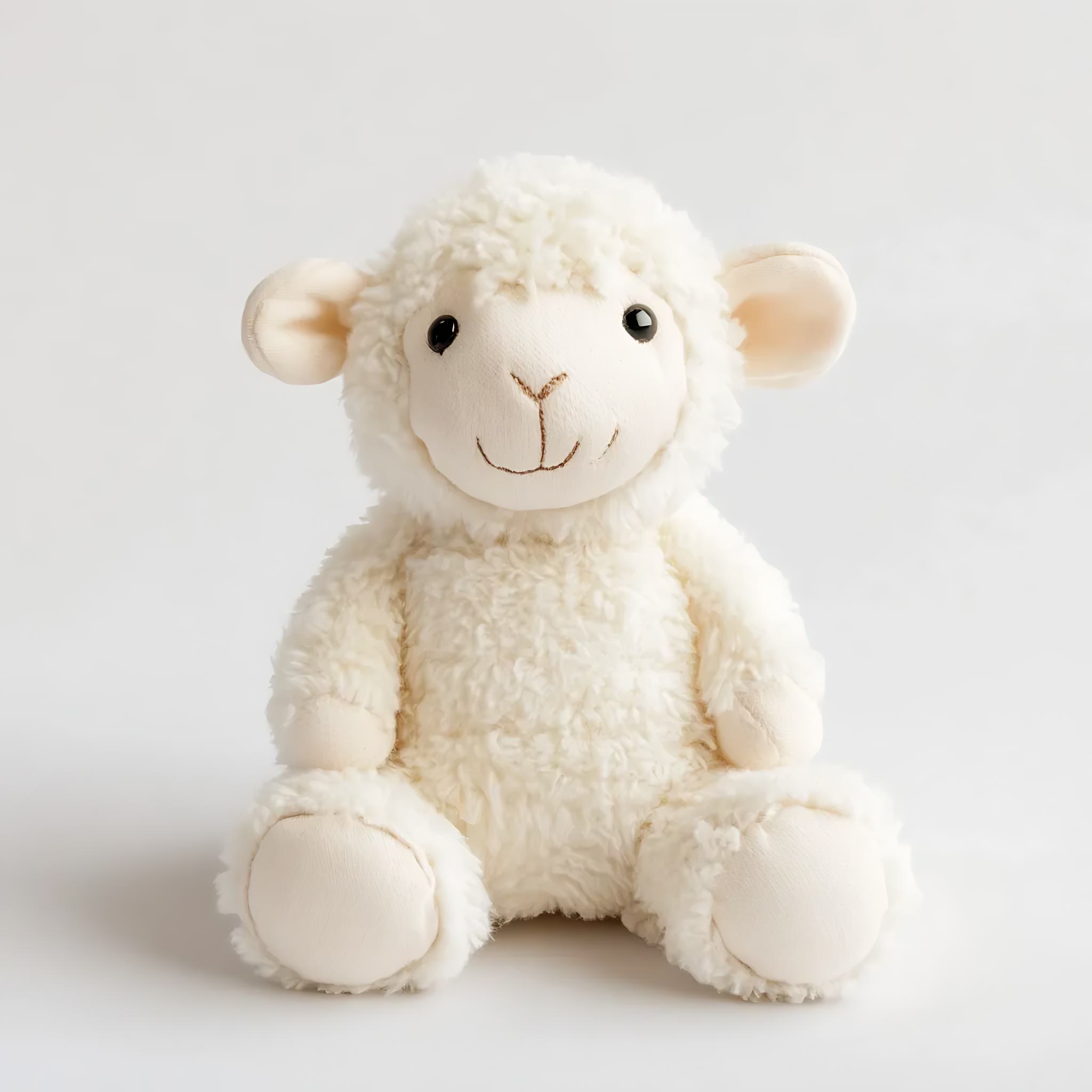
How to Introduce New Toys to Your Puppy’s Routine
Introducing new toys to your puppy’s routine can be a delightful experience that not only keeps them entertained but also helps in their development. Here are some tips on how to smoothly incorporate these new playthings into your furry friend’s daily life:
Find the Right Time
Timing is crucial when introducing new toys. Puppies are most receptive to new things in the morning or after a nap, when they’re alert but not overly energetic. Avoid introducing new toys during mealtime or when your puppy is already tired or cranky.
Start Small
Begin with a single toy to avoid overwhelming your puppy. Choose something that’s not too big for them to swallow and that has a scent they might find appealing. This could be a soft, plush toy or a small rubber chew.
Let Them Sniff Around
Give your puppy a chance to investigate the new toy at their own pace. Let them sniff it, lick it, and even chew on it gently. This helps them associate the toy with positive experiences and comfort.
Encourage Play
Once your puppy shows interest, gently encourage them to play with the toy. You can use treats to entice them or simply show them how to interact with it. For example, if it’s a ball, roll it around for them to chase.
Be Patient
Puppies may not immediately take to a new toy. Be patient and give them time to adjust. If they’re hesitant, try placing the toy in their bed or a quiet corner where they feel safe and can explore it at their leisure.
Integrate with Daily Activities
Incorporate the new toy into your puppy’s regular routine. For instance, use it as a reward during training sessions or as a distraction when you’re busy preparing meals. This helps the toy become a regular part of their day.
Monitor Their Interaction
Keep an eye on how your puppy interacts with the new toy. If they seem to be interested, keep playing with them. However, if they show signs of frustration or aggression, take the toy away and try again later.
Offer Choices
Give your puppy a variety of toys to choose from. Different textures, shapes, and sizes can stimulate different senses and keep your puppy engaged. Some dogs might prefer a rattle, while others might enjoy a tug-of-war toy.
Rotate Toys
To keep things interesting, rotate your puppy’s toys regularly. This prevents them from getting bored with the same items and encourages them to explore and play with new ones. Just be sure to keep an eye on any toys that show signs of wear and tear.
Create a Play Schedule
Establish a play schedule that includes different types of play with the new toys. This could include interactive play, such as hide-and-seek with a plush toy, or physical play, like fetch with a ball. A structured playtime can help your puppy stay active and healthy.
Teach Them to Share
If you have multiple dogs, introduce new toys gradually. Start by giving each dog their own time with the new toy to prevent competition. Eventually, you can encourage them to share, teaching them to take turns and play nicely together.
Be Consistent
Consistency is key when introducing new toys. Use the same method each time to help your puppy understand what’s expected of them. This will make the process easier and more effective.
Observe and Adapt
Pay attention to how your puppy responds to the new toys. If they’re not interested, try different types or find a way to make the toy more appealing. Observing their behavior will help you tailor the introduction to their preferences.
By following these tips, you can ensure that introducing new toys to your puppy’s routine is a positive and enjoyable experience for both of you. Remember, the goal is to provide entertainment, mental stimulation, and a sense of security for your new furry friend.
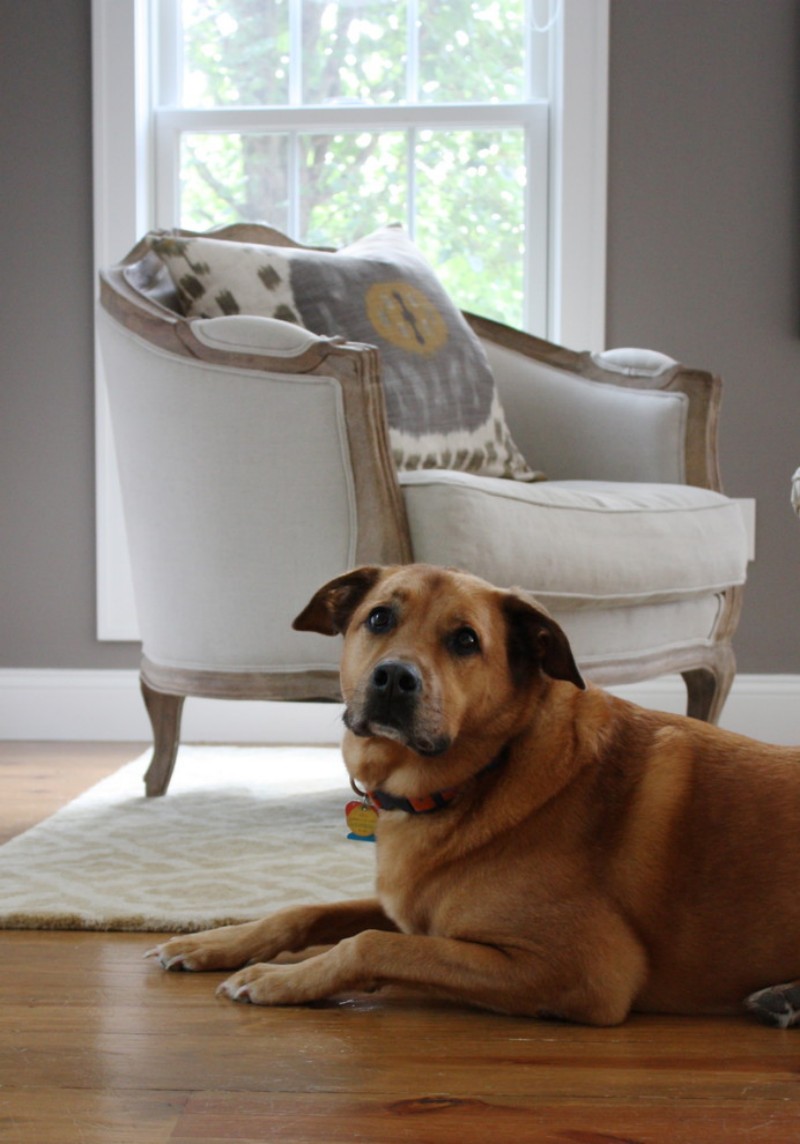
The Benefits of Scented Toys for Your Puppy’s Sensory Experience
Scented toys offer a world of olfactory delights for your furry friend, enhancing their sensory experience in ways that can be both entertaining and beneficial. Here’s a closer look at why these toys are a hit with puppies and how they can enrich their playtime.
Puppies have an incredibly strong sense of smell, far more acute than humans. This keen olfactory ability is a part of their natural instincts and survival skills. Scented toys tap into this sense, allowing puppies to engage with their environment in a more profound way. Imagine a toy that not only catches their eye but also tickles their nose—such toys can be a game-changer for your pup.
One of the key benefits of scented toys is that they can help with your puppy’s scent marking behavior. Puppies often use scent to navigate and communicate with their surroundings. A toy that carries a familiar scent can provide comfort and a sense of security, especially when they’re in a new or unfamiliar environment. This can be particularly useful during the house-training process, as it helps them establish a scent marker in their designated bathroom area.
Scented toys can also aid in the development of your puppy’s sense of smell. By introducing toys that have different scents, you can encourage your puppy to use their nose more actively. This can be a fun way to engage their brain and provide mental stimulation. Puppies who are encouraged to use their sense of smell can become more alert and attentive, which is a great skill for them to have as they grow.
Many scented toys are designed to be durable and interactive, which means they can provide hours of entertainment for your puppy. For instance, a toy with a hidden compartment that releases a scent when your puppy plays with it can keep them occupied for what feels like an eternity. This kind of play not only keeps your puppy busy but also helps to reinforce the bond between you and your pet.
One of the most appealing aspects of scented toys is their ability to mimic natural objects. Puppies often find it fascinating to explore the world around them, and scented toys that mimic real-life items can be particularly intriguing. A toy that smells like a bone, for example, can satisfy your puppy’s natural urge to chew and explore, while also providing a safe alternative to real bones that can splinter or pose a choking hazard.
In addition to the mental and physical benefits, scented toys can also be a useful tool for training. You can use a toy with a strong scent to help your puppy learn commands or to reinforce good behavior. The scent can act as a marker that helps your puppy associate a specific action with a reward or instruction, making training sessions more effective.
It’s important to choose scented toys that are safe for your puppy. Look for toys made from non-toxic materials and ensure that the scent is natural and not overpowering. You want your puppy to enjoy the toy and the scent, but you also want to avoid any potential health risks.
Another benefit of scented toys is that they can help with separation anxiety. If your puppy is prone to stress when you’re not around, a toy with a familiar scent can provide a comforting reminder of you. This can be especially helpful during the initial stages of puppy ownership when you’re still getting to know each other and building trust.
Scented toys can also be a great way to introduce your puppy to different smells in a controlled and safe manner. This can be particularly useful if you plan to introduce your puppy to new environments or if you have multiple pets in the household. By using toys with different scents, you can help your puppy become more adaptable and less fearful of new experiences.
In conclusion, scented toys offer a multitude of benefits for your puppy’s sensory experience. They can provide comfort, mental stimulation, and a safe way for your puppy to explore the world around them. Whether you’re looking to enhance your puppy’s sense of smell, aid in training, or simply provide entertainment, scented toys are a valuable addition to your puppy’s toy box. Remember to choose toys that are safe and appropriate for your puppy’s age and chewing habits, and enjoy the delightful journey of watching your puppy’s world come alive through their sense of smell.
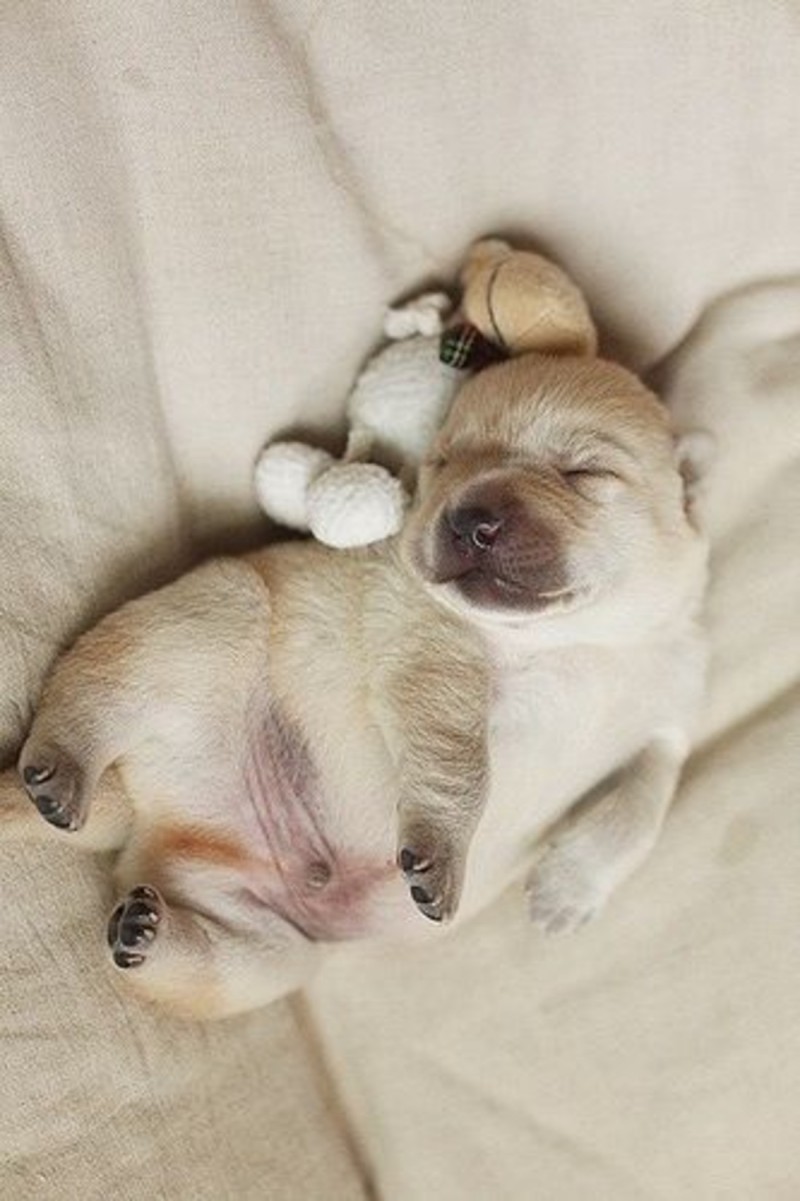
Maintaining Your Puppy’s Toys: Tips for Longevity
Puppies are bundles of energy and curiosity, constantly exploring their world with their paws, teeth, and snouts. Ensuring their toys are well-maintained not only prolongs their enjoyment but also keeps them safe. Here are some tips to help your puppy’s toys last longer:
-
Regular Inspections: Just like us, toys can wear down over time. Periodically check your puppy’s toys for any signs of damage, such as loose parts, worn-out edges, or stitching that’s coming undone. If you spot anything, it’s time to retire that toy to prevent potential ingestion of small pieces.
-
Avoid Overuse: While it’s tempting to let your puppy play with their favorite toy all the time, it’s important to rotate their toys. This way, each toy gets a fair amount of time to rest and recover from the wear and tear of daily play. Plus, introducing new toys keeps things interesting for your furry friend.
-
Washing and Cleaning: Most toys can be cleaned, which is great for maintaining hygiene and extending their life. For plush toys, a gentle hand wash with mild soap and cold water is usually sufficient. Be sure to rinse thoroughly and let them air dry completely before giving them back to your puppy. Hard toys can be wiped down with a damp cloth or, if they are dishwasher safe, placed in the top rack of the dishwasher.
-
Monitor Chewing Patterns: Puppies love to chew, which can be both a natural behavior and a way to explore textures. Keep an eye on how your puppy chews on their toys. If you notice that certain toys are being chewed through more quickly, it might be time to replace them with something more durable or to switch up the type of toy they are using.
-
Store Toys Properly: When not in use, store your puppy’s toys in a designated area. This helps prevent them from getting lost or damaged. Keep toys away from sharp objects or heavy furniture that could potentially harm them.
-
Consider Material Durability: Some materials are more resilient than others. Natural rubber, for instance, is often tougher than plush or rope toys. If you’re looking for long-lasting toys, consider those made from sturdy materials that can withstand the rigors of play.
-
Use Toys as Training Tools: Incorporate your puppy’s toys into their training routine. Use them for rewarding good behavior, such as learning to sit or stay. This not only helps your puppy learn but also ensures that their toys are well-loved and well-used.
-
Keep an Eye on Playmates: If your puppy plays with other dogs, be aware that their toys may wear out faster due to rough play. Regularly inspect toys shared among multiple pets to ensure they’re still safe to use.
-
Be Mindful of Edible Toys: Some toys are designed to be ingested and then excreted, like certain types of dental chews. Monitor your puppy closely during these activities to ensure they don’t swallow any small pieces or parts of the toy.
-
Replace as Needed: It’s important to recognize when a toy is beyond repair. Even if it seems like it’s still usable, a toy that’s become frayed, worn, or damaged can pose a risk to your puppy. Replace it with a new one to keep your puppy safe and happy.
Remember, maintaining your puppy’s toys is not just about saving money—it’s about ensuring their safety and well-being. By taking care of their toys, you’re investing in the long-term health and happiness of your furry companion.
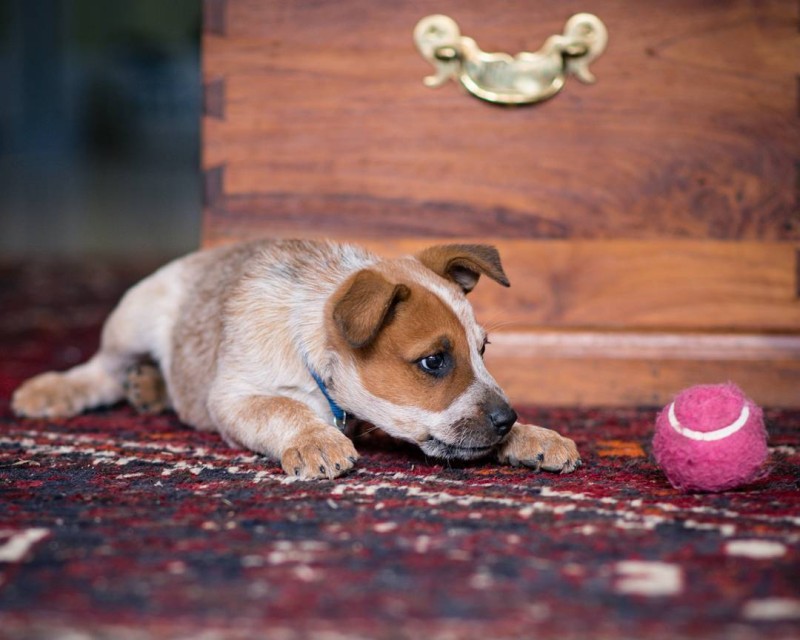
Final Thoughts: Nurturing Your Puppy’s Growth with the Perfect Toys
In the journey of raising a puppy, the toys they play with aren’t just items; they’re gateways to a world of exploration, learning, and joy. Toys shape a puppy’s growth, from the physical to the emotional and cognitive. Choosing the right toys and understanding their role in a puppy’s life can make a significant difference in your furry friend’s development. Here are some final thoughts on how to nurture your puppy’s growth with the perfect toys.
Toys can be a reflection of a puppy’s personality, and it’s important to choose ones that resonate with their interests and behaviors. For example, a playful puppy might thrive on interactive toys that challenge them to problem-solve, while a more reserved pup might find comfort in soft, plush toys that offer a sense of security.
One key aspect to consider is the developmental stage of your puppy. Puppies have different needs as they grow, and their play preferences can change accordingly. During the teething phase, puppies may be inclined towards hard toys that they can chew on to alleviate the discomfort of teething. As they mature, they might start to show interest in toys that mimic real-life objects, such as balls or bones, which can encourage their natural instincts to fetch and carry.
The perfect toy for a puppy can also be one that helps in socialization. Toys that allow for playdates with other dogs can teach your puppy how to interact with peers, fostering good social skills and helping them understand appropriate behavior.
It’s not just about the toys themselves; it’s about the experiences they provide. Puppies learn through play, and each toy can offer a unique lesson. For instance, a puzzle toy can stimulate their problem-solving skills, while a tug-of-war toy can encourage physical exercise and improve their motor skills.
Safety should always be at the forefront when selecting toys for your puppy. Toys should be made of non-toxic materials, free of small parts that could be swallowed, and robust enough to withstand the rigors of play. It’s also essential to keep an eye on any signs of wear and tear, as a damaged toy can become a hazard.
In addition to safety, the right toys can have a calming effect on puppies. A plush toy with a comforting scent can be a great comfort to a puppy, especially during times of stress or anxiety. The familiar scent can provide a sense of security, making the toy an integral part of their routine.
As your puppy grows, you may notice changes in their play habits. A once-cherished toy might become less appealing as they reach different developmental milestones. It’s important to be adaptable and rotate toys to keep things interesting. New toys can introduce new experiences and continue to challenge your puppy’s developing mind.
The bond between a puppy and their owner is strengthened through shared playtime. Toys can be a tool for this connection, as they offer a common ground for interaction and fun. Engaging with your puppy during play can be an excellent opportunity to reinforce training, teach commands, and work on behavioral cues.
In conclusion, the perfect toy for a puppy is one that not only entertains but also supports their growth and learning. It’s a companion that can navigate them through the challenges of puppyhood and set the stage for a lifetime of healthy play. Whether it’s a simple plush toy or a complex interactive gadget, the right toy can be a catalyst for your puppy’s development, shaping them into the well-rounded and happy dog they’re destined to be. Remember, the joy of watching your puppy grow and learn is something that these toys will bring to you as well, making the experience all the more rewarding.
